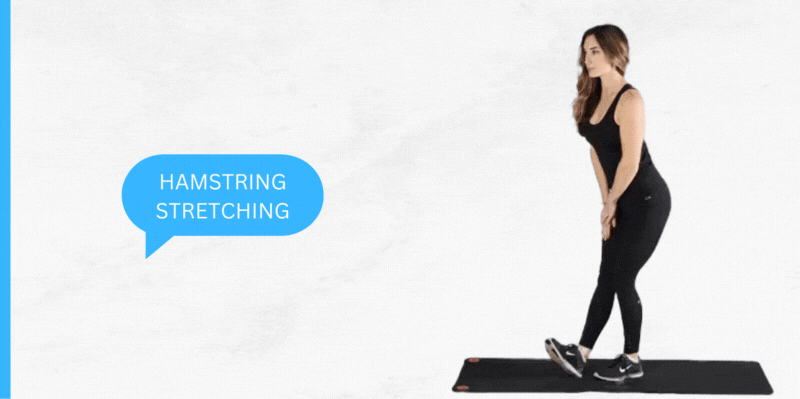If you are into athletics or simply like to keep fit, then chances are you have heard of a meniscus tear. For those of you who don’t know, the meniscus is a cartilage located in the knee that helps to absorb shock and protect the joint. When this cartilage becomes damaged, it can cause a lot of pain and discomfort.
A meniscus tear can occur due to many different reasons such as aging, sudden impact, or overuse Injury. It is important to identify the symptoms early so that proper treatment can be given. If left untreated, a meniscus tear can lead to further damage to other tissues in the knee and even osteoarthritis. So if you think you might have a meniscus tear, read on for more information on how to cure it!
What Is Meniscus Tear
A meniscus tear is a traumatic injury of the knee that affects the cartilage within the joint. Meniscus tears are usually caused by activities such as sports, or other athletic pursuits, but can also occur due to aging or sudden impact. When stretched too far, or twisted in an unnatural way, the tissue of the meniscus can tear. Meniscus tears can be painful, and in some cases they may cause the knee to swell or feel unstable.
Symptoms Of Meniscus Tear
The most common symptom of a meniscus tear is pain on the inside or outside of your knee. Additionally, you may experience swelling or a “popping” sensation in the knee. Other symptoms may include a feeling of instability or “catching” in the joint, as well as difficulty straightening or bending your knee fully.
How To Cure Meniscus Tear
There are several different treatments for a meniscus tear, depending on its severity and location in the knee. In mild cases, a period of rest and physical therapy may be enough to alleviate symptoms and restore functional movement. However, more severe tears may require surgery or arthroscopic repair. Depending on age, activity level and lifestyle, your doctor will determine the best treatment for you.
Meniscus Tear Exercises
Quadriceps Strengthening:

Strengthening your quadriceps muscles can help prevent further injury and improve the stability of your knee joint. Try doing leg extensions or squats with light weights to target these muscles.
Hamstring Stretching:

Stretching your hamstrings can reduce pain and improve mobility in the knee joint. Try lying on your back and straightening one leg, pulling it towards your chest until you feel a gentle stretch in the back of your thigh.
Leg Lifts:

This exercise will help to strengthen the muscles around the knee and improve stability. Start by lying on your side with your legs stacked on top of each other. Then slowly raise your top leg while trying to keep the lower one stable.
Calf Raises:

Calf raises help to strengthen the muscles in your legs, which can improve stability and reduce pain in the knee joint. Start by standing on a step with your feet about hip-width apart. Then raise both heels off the step, hold for a few seconds, and slowly lower them back down.
Balance Exercises:

Improving your balance can help reduce the risk of injury and improve stability in the knee joint. Try standing on one leg for a few seconds at a time or challenge yourself with single-leg squats or lunges.
With proper treatment, rest, and exercise, a meniscus tear should heal within a few weeks or months. If you think you may have a Meniscus tear, talk to your doctor about the best treatment for your injury. Meniscus tears can be painful and slow to heal, but proper care and rehabilitation can help ensure that you get back on your feet as soon as possible. With the right exercises and treatments, you can get back to doing all of the activities that you love!
Meniscus Tear Treatments
In addition to rest and exercise, there are several other treatments that can be used to reduce pain and inflammation associated with a meniscus tear. Non-steroidal anti-inflammatory drugs (NSAIDs) such as ibuprofen and naproxen can help reduce pain and swelling. Additionally, wearing a knee brace or using crutches may be recommended to limit movement and protect the joint during recovery.
Meniscus tears can be painful, but with proper diagnosis and treatment, they can be effectively managed. If you think you may have a meniscus tear, it is important to see your doctor as soon as possible for an accurate diagnosis and treatment. With the right combination of rest, exercise and medications, you can get back on the field or court in no time!
What Doctors Say:
“Meniscus tears can be very painful and cause a lot of disruption to the knee joint,” says Dr. John Bradley, an orthopedic surgeon at the University of Virginia. “But with proper treatment including rest, exercise, and medications. Most people can get back on their feet and continue doing the activities they enjoy.”
With the right combination of medical treatment, exercise and lifestyle modifications, you can improve your chances of a successful recovery and reduce the risk of further injury to your knee. So if you think you have a meniscus tear, don’t delay in seeing your doctor for an accurate diagnosis and treatment plan!
FAQs
What is the best rehabilitation for a torn meniscus?
The best rehabilitation for a torn meniscus depends on the type and severity of the tear. Generally, physical therapy can help reduce pain and inflammation, strengthen the muscles surrounding the knee joint and restore functional movement. Additionally, medications such as NSAIDs and braces may be recommended to limit movement and protect the joint during recovery.
What are the long-term effects of a meniscus tear?
The long-term effects of a meniscus tear can vary based on the severity and location of the injury. In most cases, with proper diagnosis and treatment, patients can expect a full recovery within 6 to 8 weeks. However, if left untreated or not properly managed. A meniscus tear can lead to further damage and long-term complications such as arthritis or chronic pain.
Are there any exercises that can help prevent a meniscus tear?
Yes, there are exercises that may help strengthen the muscles surrounding the knee joint and improve joint stability. These include leg extensions, hamstring curls, and wall squats. Additionally, it is important to maintain a healthy weight and avoid activities that put excessive strain on the knee joint such as running or jumping.
By consulting with your doctor and following their prescribed treatment plan. You can improve your chances of a successful recovery from a meniscus tear. Remember to take time for rest. Exercise regularly and make lifestyle modifications to reduce the risk of further damage and long-term complications. With the right combination of medical treatment, exercise, and lifestyle modifications. You can get back on your feet in no time!
What is the solution for the medial meniscus tear?
The treatment for a medial meniscus tear will depend on the severity of the tear. In most cases, physical therapy and nonsteroidal anti-inflammatory drugs (NSAIDs) such as ibuprofen and naproxen can help reduce pain and inflammation. Additionally, a knee brace or crutches may be recommended to limit movement and protect the joint during recovery. Surgery may be necessary if the tear is severe and does not respond to conservative treatment. In some cases, arthroscopic surgery may be an option in order to repair or remove the meniscus. Your doctor will be able to provide you with a personalized treatment plan for your specific injury.
